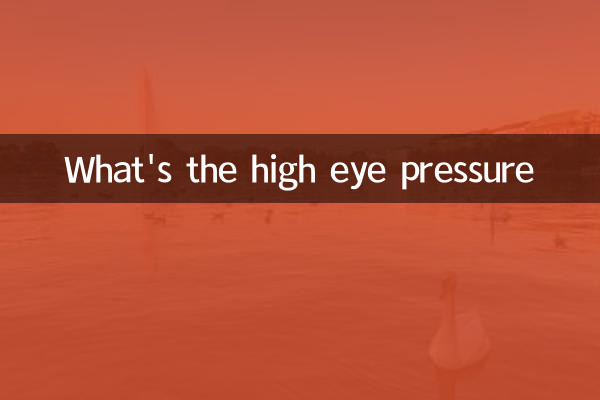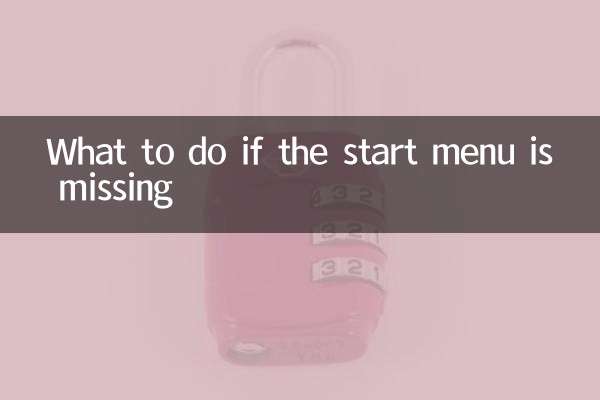What's the matter with high eye pressure
In recent years, with the popularity of electronic devices and the increase in eye strength, eye health issues have attracted much attention. Among them, high intraocular pressure is a common symptom, but many people do not understand its causes and harms. This article will combine popular topics and hot contents across the network for the past 10 days to analyze the causes, symptoms and response measures of high intraocular pressure for you in detail.
1. Definition and normal range of intraocular pressure

Intraocular pressure refers to the pressure inside the eyeball, which is determined by the balance of water generation and discharge. A normal range of intraocular pressure is the key to maintaining the shape and visual function of the eyeball. The following are the normal range reference values for intraocular pressure:
| Intraocular pressure classification | Range (mmHg) |
|---|---|
| Normal ocular pressure | 10-21 |
| Suspicious eye pressure | 21-24 |
| Eye pressure | ≥24 |
2. Common causes of high intraocular pressure
There are many reasons for high intraocular pressure, which may be related to lifestyle habits, diseases or genetic factors. Here are some major reasons for the discussion in the near future:
| Cause classification | Specific instructions |
|---|---|
| Excessive eye use | Long-term use of electronic devices, staying up late, etc. causes eye fatigue |
| Genetic factors | People with a history of glaucoma in their family are at a higher risk |
| Disease factors | Glaucoma, diabetes, hypertension and other diseases may cause high intraocular pressure |
| Drug effects | Some hormone drugs may cause increased intraocular pressure |
| Age growth | People over 40 years old have increased risk of increased intraocular pressure |
3. Symptoms of high intraocular pressure
High intraocular pressure may be accompanied by the following symptoms and should be taken seriously:
| symptom | Detailed description |
|---|---|
| Blurred vision | Unclear viewing, especially in dark light environments |
| Swelling and painful eyes | Eyeballs feel compressed or swelling |
| Headache | Pain around the eye socket or forehead |
| Nausea and vomiting | In severe cases, digestive symptoms may be accompanied by |
| Iris vision phenomenon | Colorful halos appear when watching the light |
4. Recent hot discussions on high intraocular pressure related topics
According to the data monitoring of the entire network for the past 10 days, the following topics are highly discussed:
| topic | Popularity index | Main focus |
|---|---|---|
| Electronic screen and eye pressure | 85 | Will using a mobile phone for a long time lead to increased intraocular pressure |
| Self-testing method of intraocular pressure | 78 | How to determine whether the intraocular pressure is abnormal at home |
| Traditional Chinese medicine reduces ocular pressure | 72 | Discussion on the effects of traditional therapies such as acupuncture and massage |
| Teenager Intraocular Pressure Issues | 65 | Prevention measures for abnormal intraocular pressure in students |
5. Prevention and treatment suggestions for high intraocular pressure
Regarding the problem of high intraocular pressure, experts have recently put forward the following suggestions:
| Measure Type | Specific content |
|---|---|
| Living habits | Control the eye time and look out for 20 seconds every 20 minutes; avoid sleeping on your stomach |
| Diet conditioning | Intake more foods rich in vitamin A and C; limit caffeine intake |
| Sports advice | Appropriate aerobic exercise, such as walking and swimming; avoid strenuous exercise |
| Medical intervention | Regular ophthalmic examinations; use intraocular pressure-reducing drugs as directed by doctors |
| Emotional Management | Keep a happy mood and avoid violent emotional fluctuations |
6. Special reminder
Recently, there has been a statement on the Internet that "high intraocular pressure can heal itself" has caused heated discussion. Experts' special reminder:High intraocular pressure may be an early manifestation of serious eye diseases such as glaucoma, so you must not take it lightly. If symptoms of continuous elevation of intraocular pressure occur, seek medical examination in time to avoid delaying the treatment opportunity. Especially for people over 40 years old, patients with high myopia, and those with a family history of glaucoma, it is recommended to undergo a professional intraocular pressure examination every 6-12 months.
From the above analysis, we can see that high intraocular pressure is a health issue that needs to be paid enough attention to. Understanding the causes, symptoms and responses will help us better protect our eyes health. With the increasing popularity of digital life, it is particularly important to use the eyes scientifically and check regularly.

check the details

check the details